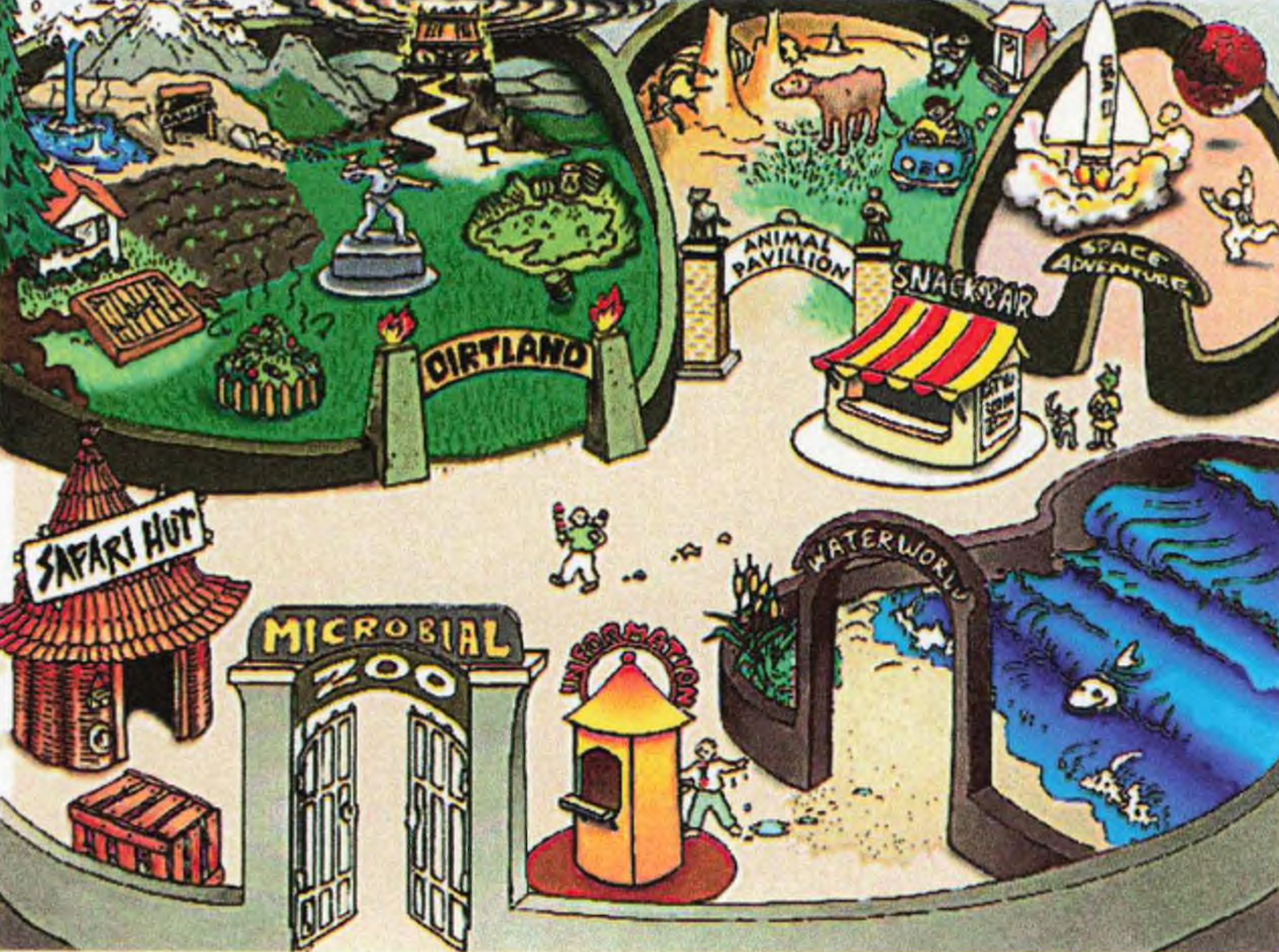“The Digital Learning Center For Microbial Ecology” by Russell and Heeter
Conference:
- SIGGRAPH 1995
-
More from SIGGRAPH 1995:


Type(s):
Title:
- The Digital Learning Center For Microbial Ecology
Program Title:
- Interactive Communities
Presenter(s):
Collaborator(s):
- Catherine McGowan
- Bob Matson
- Susanna Tellschow
- Brian Corrs
- Ed Zelinske
- Ricardo Freire
- Andrew Dickson
- Flavia Duarte
- Pericles Gomes
- Tim Mallos
Project Affiliation:
- Michigan State University
Description:
- Microbe Zoo, in which users stroll from “cage” to “cage” ogling at the exotic and peculiar specimens housed within.
- Microbes in the News, a compendium of topical items from popular press stories relevant to microbiology, where students ask questions and scientists offer comments in a network based dialog on the latest news from the world of microbiology.
- Meet the Scientists, where scientists describe their work and explain the origins of their interest in science.
We are constantly surrounded by and immersed within a dynamic ecosystem that is normally invisible to us and therefore outside of our awareness. Most people know of microbes only as disease-causing germs, but the microbial world is also teeming with beneficial creatures such as the yeasts that make bread rise, the lactobacillus that creates yogurt, and the host of organisms that turn old leaves and dead logs into new soil.
The mission of the Digital Learning Center for Microbial Ecology is to use multimedia and networking technologies to bring the invisible worlds of microscopic organisms and communities into view and to make them accessible to students and teachers everywhere. The project is being created by the Michigan State University Communication Technology Laboratory in collaboration with MSU’s Center for Microbial Ecology (CME) and College of Education with partial funding from the National Science Foundation.
CME, one of 19 NSF-funded Science and Technology Centers dedicated to interdisciplinary study of emerging scientific fields, serves as a gathering place for ecologists, biochemists, and microbiologists interested in microscopic ecosystems.
The Digital Learning Center for Microbial Ecology is an extension of this worldwide virtual community, where teachers and students collaborate with colleagues, conduct seminars, and share their findings in a continuous dialog on microbial ecology. It includes three environments:
The environments are available on CD-ROM and via the World Wide Web. They include: photos of microorganisms, laboratory environments, and scientists; digital video of researchers discussing their work, animations illustrating biochemical processes, and views through the microscope showing peculiar forms of microbe locomotion; and audio clips of enthusiastic scientists describing what turned them on to science. News summaries are posted to the Microbes in the News section of the World Wide Web site as the stories break, and students and scientists comment on the stories and post questions via email. Users can browse multimedia resources online or download stand-alone modules.





